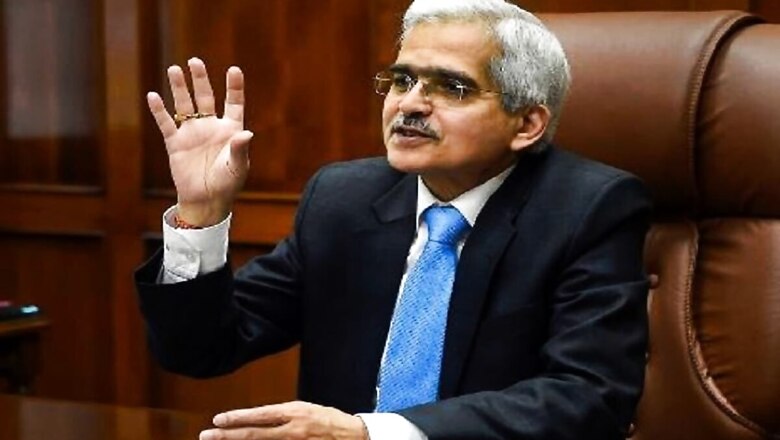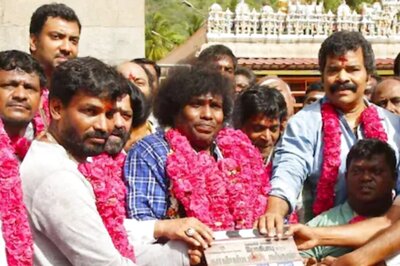
views
The poorest have been hit the hardest, the Reserve Bank of India (RBI) says in its latest annual report, referring to the aftermath of Covid-19 pandemic and acknowledging a fact which policy makers and politicians rarely do. India’s central bank has anyway done the heavy lifting in offering solutions to a battered Indian economy post the pandemic through a series of measures, including unprecedented and successive reduction in lending rates to spur growth.
The government’s policy response post Covid-19 has been underwhelming at best, with most measures aimed at inducing structural reforms rather than offering immediate stimulus to sectors most impacted by the pandemic. The RBI has noted that white collar employees can work from home (after the pandemic induced lockdowns) but essential workers have to work on site. And the latter are thus “exposed to the risk of getting infected. In some areas of work such as hospitality, hotels and restaurants, airlines and tourism, employment losses are more severe than in other areas. The poorest have been hit the hardest.”
The central bank has also spoken of the dire situation the Indian economy continues to be in, the policy response so far from the government and how the bank has responded with monetary measures to counter the economic shock. There is acknowledgement of the near reversal of economic gains made in May and June, when the nationwide lockdown was gradually lifted. In the subsequent months of July and August, as states imposed staggered lockdowns and the virus permeated India’s hinterland, economic gains have reversed.
Not just the worries, the RBI has also spoken in detail about the green shoots, so to say, by referring to the measures the government has announced since April to offer jobs and livelihoods, handhold certain industries and become aatma-nirbhar (self-reliant) in an effort to increase India’s manufacturing prowess.
Poor: Covid-19 and the resultant harsh, countrywide lockdown led to possibly the largest reverse migration in Independent India, as workers were left with no jobs, food or money to survive due to the suddenness of the lockdown. Scores lost their lives while returning home to different states, walking hundreds of miles without food or water. Now, as the virus has permeated India’s hinterland and factories have simultaneously begun part production, these migrants are coming back to reclaim jobs.
But not all pre-pandemic livelihoods are available and job losses are not confined to the unorganised sector alone. The salaried have also faced widespread income disruption.
Mahesh Vyas of CMIE said a few days back that small traders, hawkers and daily wage labourers were the worst hit by the lockdown in April, accounting for three in four jobs lost. “Of the 121.5 million jobs lost in that month, 91.2 million were among these. This category of employment accounted for about 32 per cent of total employment but suffered 75 per cent of the hit in April. Large numbers of these people lost their source of livelihood so quickly because their employment is almost entirely informal. They have an employment in hand only when the economy around them is humming. When this economy shuts down, they lose their employment during that period. Similarly, as the economy unlocks in steps, these jobs come back almost in lockstep.”
Of the 91.2 million such jobs lost in April, 14.4 million came back in May, 44.5 million in June and 25.5 million in July. But 6.8 million are yet to return, Vyas said. He has also spoken of the wide erosion of jobs for the salaried. And now, the RBI’s observations have led to political barbs.
Former Congress chief Rahul Gandhi tweeted that RBI has now confirmed what he has been warning for months. “Govt needs to: Spend more, not lend more. Give money to the poor, not tax cuts to industrialists. Restart economy by consumption. Distractions through media won’t help the poor or make the economic disaster disappear.” The Congress has been advocating direct cash transfers to the poor.
Economy: The RBI has indicated that economic recovery would be slow and painful and economic contraction could continue till at least next month, as some states have imposed fresh lockdowns and gains seen in May and June have reversed. The CSO is scheduled to release Q1 (April-June 2020) GDP data next week and experts have already warned of an unprecedented contraction in India’s GDP. The central bank also noted the shock to consumption since March has been severe, government finances are already stretched and cuts in public expenditure at state government level could continue, thus impacting consumption growth further.
Amid all this, senior Finance Ministry officials have indicated that the government is not averse to a second fiscal stimulus package but will await the weakening of the pandemic to come up with fresh measures. Meanwhile, it is interesting to see that India Inc has used the gains from lower headline corporate tax (announced post the pandemic) not to hike capital expenditure but to pare debt and shore up cash reserves.
Frauds: Total cases of frauds involving anything more than one lakh rupees shot up by a fourth during 2019-20 but the amount of money involved in these frauds jumped by nearly 160 per cent. Of the over Rs 1.85 lakh crore in fraudulent transactions, nearly three-fourth involved just fifty cases of large value frauds. And like in previous years, public sector banks accounted for a lion’s share of the fraud amount at nearly 80 per cent.
While the RBI has been candid about the troubles lying ahead for the sputtering Indian economy, it has also, unsurprisingly, concluded in most instances that the policy response from the government has been adequate in tackling the unprecedented economic stress.
The author is a senior journalist. Views expressed are personal.




















Comments
0 comment